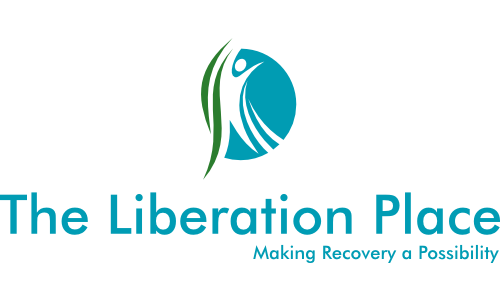The Process
As I’ve said before, and I’m pretty sure you’re going to hear me say over and over again in the future, making behavioural changes is a really difficult thing to do regardless of where you’re at in life. When we begin to understand that the behaviours we’re trying to change are not the problem we need to face because they’re actually the thing we use as the solution to our problems, it’s a natural reaction for us to want to race straight in to fix the real problem, mainly so we can get on with the rest of our lives and go back to being “normal.” Unfortunately, this usually only leads to our emotional system getting overwhelmed and the desire to use those behaviours that we’re trying to work on increasing to a level that’s extremely difficult to manage given the skills we currently have at our disposal. This is why it’s essential to recognize that there’s a process to making changes that we simply cannot rush. Even if we think we’ve got the capability to push through, smashing down walls and doors like a bull in a china shop usually only leaves us with more problems than we had to begin with.
Without following the process, we set ourselves up for a level of failure that can border on being extremely dangerous for some people. So, building a solid foundation, and following the methodology required to create sustainable life changes is absolutely critical. At the same time, even though we might be aware of the need for this process as something that’s a simple fact, we often get drawn into seeking the Instant Gratification we get from immediate success. The Problem with Instant Gratification is something we also have to be extremely aware of as it can create a lot of different issues in many areas of life, particularly in the area of behavioural changes. I will get into the PIG in greater detail at a later date, but for now, we have to focus our attention on the process we need to follow to make the changes we want to make in a safe and sustainable way by taking baby steps.
"Without following the process, we set ourselves up for a level of failure that can border on being extremely dangerous for some people. So, building a solid foundation, and following the methodology required to create sustainable life changes is absolutely critical."
~Steven Morris RP.
First on the agenda is creating stability in our lives. If we look at the guidelines laid out in obtaining the type of support we need for our current emotional needs, getting out of the initial crisis we are dealing with is always the first place to start. However, once we’ve passed through that difficult and challenging place to be, stability is the next goal on the list. In Dialectical Behaviour Therapy, the type of stability we are looking for is obtained through a solid and regular Mindfulness Practice and learning how to use the skills of Distress Tolerance by building them into our daily routine. Both of these are fundamental aspects of the foundation for change, and we need to get this foundation in place before stepping into the emotionally triggering work we do when exploring the real issues that drive our addictive, obsessive and compulsive behaviours.
The time frame involved in creating this level of stability really depends on the individual. Some people think that it can be done in a week or two, and while I admire the optimism involved in this way of thinking, in my experience this simply isn’t a realistic expectation. For me, it took about 6 to 12 months of really hard work to build my ability to use the skills that create the stability I'm looking for. I had to incorporate these skills into my lifestyle, make them a part of what I do every day. To be honest, it took about another 4 years of consistent work after that to make the skills habitual for me, but after 6 months I was in a stable enough place to move forward. Now I’m not saying that this is how long it will take for everyone, it will be different for each individual. You may already have the skills of Mindfulness and Distress Tolerance incorporated into your current way of doing things, and whether we do or not, we definitely don’t have to wait 5 years before getting into the real issues.
"In Dialectical Behaviour Therapy, the type of stability we are looking for is obtained through a solid and regular Mindfulness Practice and learning how to use the skills of Distress Tolerance by building them into our daily routine."
~Steven Morris RP.
When we have the right amount of stability in place, awareness for the presence of our dominant Schema is the next important step. By practicing the Mindfulness skills of DBT we will already have some insight for our unique and personal stories, so connecting them to our Schema isn’t as hard as it may sound. Using the skills of Emotion Regulation and combining them with tools from Schema therapy gives us the ability to name what’s happening in our system so we can begin to remove the rigidity we have to a particular way of seeing things in the world. Emotion Regulation starts with Self Validation, so using the skills associated with this module of Dialectical thinking builds the ability to regulate the reactions of our parts. With a bit of luck, and a lot of hard work, when we can regulate the reactions we have to triggering situations we are starting to truly Live the Life we Want to Live. Staying in line with our true core values and beliefs, and not buying into the stories we have that challenge this way of life.
Releasing the burdens of the past is the final piece of the puzzle. Building relationships that help us to let go of our stories, meeting our unmet needs both internally and externally is where we will end up if we keep in line with the work we’re trying to do. It’s not about removing the story from the past, that would be like asking you to forget about the things that have happened to you, and that’s not always a healthy thing to do. It’s about removing the rigidity we have to the story being fact all the time. It’s about re-educating our parts that while those things might’ve happened to you in the past, that was then and this is now. In my work with myself and my clients, the best skills I have found to do this is called the RAAVEN exercise. There is a basic version of this I will go over at a later date, but this skill can be used in a variety of different ways to support us in Living the Life I want to Live.
To start it all off, it’s important to know what’s important to us in life. On the following pages, I will get this ball rolling by beginning our exploration of the 10 Domains of life to establish what's important to you right now and explore the 5 core values that many people identify with. Then I will provide the tools we need to explore what our own unique beliefs are about these values. If you want to know more, keep an eye out for the interactive courses coming your way, and take some time to watch the videos linked to this page, and read the material provided. If you complete the exercises for Values and Beliefs, they’re designed to help you understand what’s important to you and how your true authentic self wants you to Live the Life you Want to Live.
Download the PDF of this page
Follow us on Social Media





